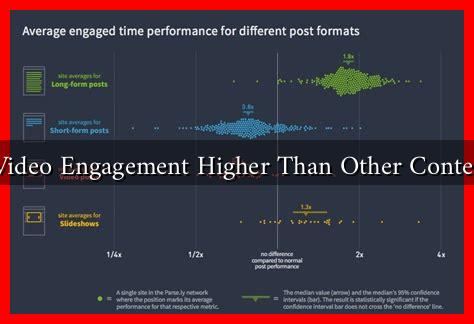-
Table of Contents
Why Is Video Engagement Higher Than Other Content Types?
In the digital age, content is king, but not all content types are created equal. Among various formats, video has emerged as the reigning champion of engagement. With platforms like YouTube, TikTok, and Instagram Reels dominating the landscape, understanding why video content garners higher engagement is crucial for marketers, content creators, and businesses alike. This article delves into the reasons behind the superior engagement of video content compared to other formats.
The Power of Visual Storytelling
One of the primary reasons video content excels in engagement is its ability to tell stories visually. Humans are inherently visual creatures, and our brains process images 60,000 times faster than text. This innate preference for visual information makes video an effective medium for storytelling.
- Emotional Connection: Videos can evoke emotions through visuals, music, and narratives, creating a deeper connection with the audience.
- Retention of Information: Studies show that people remember 95% of a message when they watch it in a video compared to just 10% when reading it in text.
Increased Accessibility and Convenience
Video content is often more accessible than other formats. With the rise of smartphones and high-speed internet, people can consume video content anytime and anywhere. This convenience significantly contributes to higher engagement rates.
- Mobile Optimization: According to Statista, mobile video consumption rises by 100% every year, making it easier for users to engage with video content on the go.
- Short Attention Spans: The average human attention span has decreased to about 8 seconds. Videos can deliver information quickly and effectively, catering to this trend.
Social Media Algorithms Favor Video Content
Social media platforms are designed to keep users engaged, and they often prioritize video content in their algorithms. This means that videos are more likely to appear in users’ feeds, leading to higher engagement rates.
- Higher Reach: Facebook reports that video posts have 135% greater organic reach than photo posts.
- Increased Shares: Videos are shared 1,200% more times than links and text combined, amplifying their reach and engagement.
Interactive Elements and Call-to-Actions
Video content can incorporate interactive elements that encourage viewer participation. Features like polls, quizzes, and clickable links can significantly enhance engagement.
- Call-to-Action (CTA): Videos can effectively guide viewers to take specific actions, such as subscribing, sharing, or visiting a website.
- Live Streaming: Platforms like Instagram and Facebook allow for real-time interaction, making viewers feel more connected and engaged.
Case Studies and Statistics
Several case studies highlight the effectiveness of video content in driving engagement. For instance, a study by Wyzowl found that:
- 84% of people say they’ve been convinced to buy a product or service after watching a brand’s video.
- 92% of mobile video consumers share videos with others.
Additionally, companies like HubSpot have reported that video content can lead to a 49% faster revenue growth than non-video content strategies.
Conclusion
In conclusion, the higher engagement rates of video content can be attributed to its ability to tell compelling stories, its accessibility, the favor it receives from social media algorithms, and the interactive elements it can incorporate. As consumers continue to gravitate towards video, businesses and marketers must adapt their strategies to leverage this powerful medium. By understanding the dynamics of video engagement, brands can create more effective content that resonates with their audience and drives meaningful interactions.
For more insights on video marketing strategies, check out HubSpot’s Video Marketing Guide.

